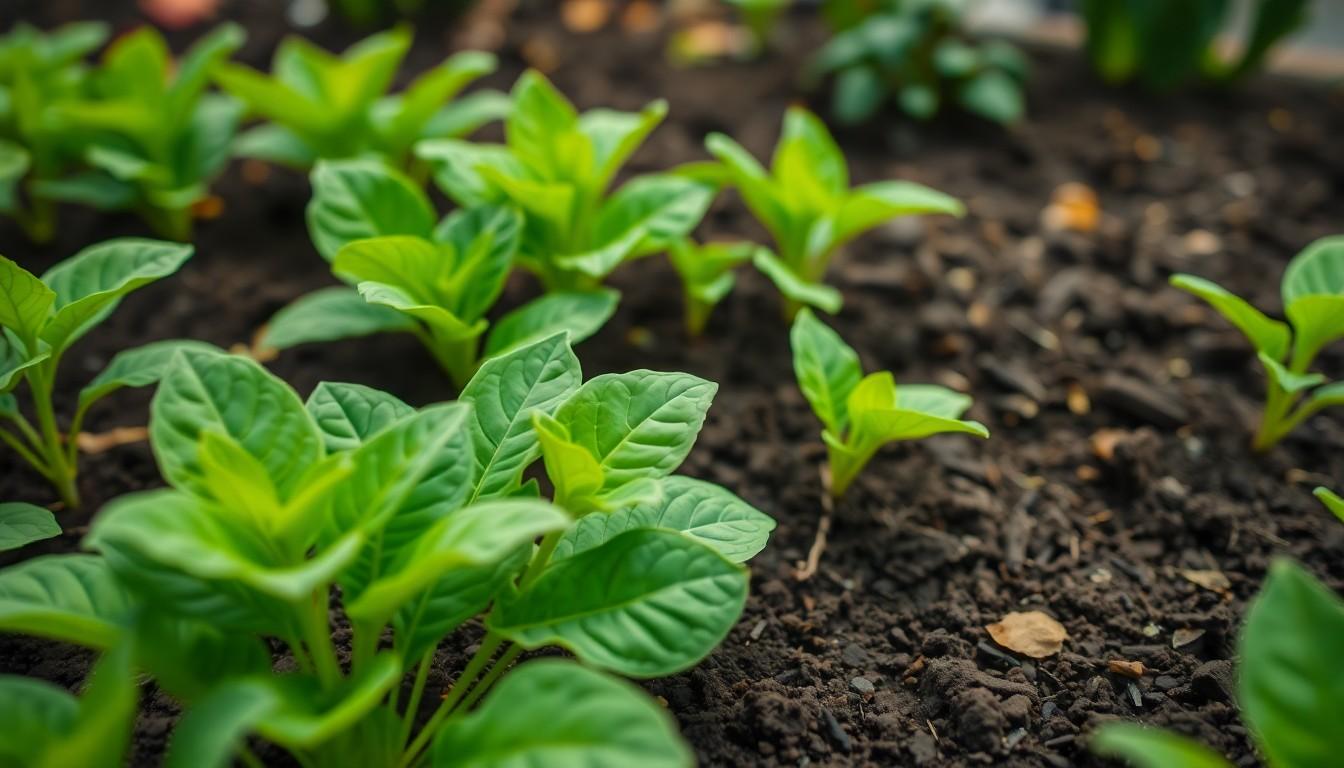Plants are the unsung heroes of our planet, quietly working hard to keep everything green and lively. But just like any superstar, they need the right nutrition to shine. Think of plant nutrition as the secret sauce that transforms a simple houseplant into a lush jungle or a sad little tomato plant into a bountiful harvest. It’s not just about water and sunlight; it’s a whole buffet of essential nutrients that makes the magic happen.
Overview of Plant Nutrition
Plant nutrition involves the essential nutrients required for plant growth and development. Nutrients fall into two main categories: macronutrients and micronutrients. Macronutrients, including nitrogen, phosphorus, and potassium, are vital in larger quantities. Micronutrients, like iron, manganese, and zinc, support various biochemical processes in smaller amounts.
Plants absorb these nutrients primarily through their roots. Soil quality influences nutrient availability. Healthy soil contains organic matter that fosters nutrient retention and microbial activity, enhancing overall plant health.
Nitrogen plays a crucial role in producing chlorophyll and amino acids. It’s integral to protein synthesis and overall plant vigor. Phosphorus supports root development and flowering, contributing to fruit and seed production.
Potassium regulates water uptake and enzyme activity. This nutrient enhances drought resistance and strengthens plant cells. Micronutrients, though needed in smaller quantities, are equally important. Iron aids in chlorophyll synthesis, while magnesium is essential for photosynthesis.
Identifying nutrient deficiencies can lead to better management practices. Common signs include yellowing leaves—indicative of nitrogen deficiency—or stunted growth from phosphorus lack. Regular soil testing allows for precise nutrient assessments.
Using fertilizers can replenish depleted nutrients. Organic fertilizers, like compost and manure, improve soil structure and provide additional nutrients. Synthetic fertilizers also offer targeted nutrient applications, but they require careful management to avoid soil degradation.
Overall, understanding plant nutrition significantly impacts gardening and agricultural practices. Implementing proper nutrient management leads to healthy plants, higher yields, and sustainable growth practices.
Essential Nutrients for Plants

Proper plant nutrition involves understanding two primary categories: macronutrients and micronutrients. Each category plays a critical role in supporting healthy plant growth.
Macronutrients
Plants require macronutrients in larger quantities. Nitrogen, phosphorus, and potassium serve as the primary macronutrients. They influence various growth processes. Nitrogen promotes chlorophyll production, which enables photosynthesis. Phosphorus enhances root development and flower production. Potassium regulates water uptake and enzyme functions. These nutrients directly affect overall plant health and resilience. Gardeners often monitor nitrogen levels through leaf coloration; yellowing may indicate deficiency. Regular soil tests ensure these essential nutrients remain balanced.
Micronutrients
Micronutrients, although needed in smaller amounts, are equally vital for plant health. Iron, manganese, zinc, and copper support critical biochemical functions. Iron is crucial for chlorophyll synthesis. Manganese aids in photosynthesis and respiration. Zinc influences hormone production and growth regulation. Plants also depend on copper for enzyme action and photosynthesis. Micronutrient deficiencies can manifest in symptoms like stunted growth or leaf discoloration. Testing soil for these nutrients allows for targeted fertilizer application, promoting optimal plant development.
Nutrient Uptake Mechanisms
Understanding how plants absorb nutrients is vital for promoting healthy growth. Nutrients enter plants through various mechanisms, primarily involving root absorption and foliar feeding.
Root Absorption
Root absorption plays a critical role in plant nutrition. Roots interact with the soil to take up essential nutrients dissolved in water. Active transport pumps ions into root hair cells against concentration gradients. These cells also utilize symbiotic relationships with mycorrhizal fungi to enhance nutrient uptake, especially phosphorus. Additionally, root structures vary; for instance, fibrous roots increase surface area for better absorption. Furthermore, nutrient availability can depend on soil pH and moisture levels, influencing overall plant health and growth.
Foliar Feeding
Foliar feeding offers an alternative route for nutrient absorption. Leaves absorb nutrients directly through tiny pores called stomata. This method provides rapid access to essential elements like micronutrients and other soluble fertilizers. Spraying nutrient solutions on leaves can support quick recovery from deficiencies. Timing and environmental conditions impact the efficacy of foliar feeding. For instance, applying nutrients during warmer temperatures can enhance absorption rates. Consequently, this technique complements root absorption, ensuring plants receive a balanced supply of necessary nutrients.
Factors Affecting Plant Nutrition
Plant nutrition relies on multiple factors that influence nutrient availability and uptake. Understanding these factors helps in promoting healthy plant growth.
Soil Quality
Soil quality plays a crucial role in plant nutrition. Nutrient-rich soils offer better support for plant health. Soil pH directly affects nutrient solubility, with most nutrients being available between pH 6 and 7. Organic matter enhances soil structure, improves water retention, and increases nutrient holding capacity. Soil texture, which refers to the proportion of sand, silt, and clay, also affects drainage and aeration. High clay content can hinder root growth, while sandy soils may lead to nutrient leaching. Regular testing assesses nutrient levels, ensuring plants receive adequate support.
Environmental Conditions
Environmental conditions significantly influence plant nutrition. Temperature affects nutrient uptake rates, with optimal ranges typically between 60°F and 75°F. Light intensity also impacts photosynthesis, thereby influencing nutrient production. Humidity levels affect transpiration rates; excessive humidity may lead to nutrient deficiencies, while too little can cause stress. Water availability directly impacts nutrient solubility and absorption, making it essential to maintain proper moisture levels. Lastly, air quality can influence nutrient assimilation; pollutants may hinder nutrient uptake and overall plant health.
Conclusion
Understanding plant nutrition is vital for anyone looking to cultivate healthy and vibrant plants. By recognizing the essential macronutrients and micronutrients required for growth, gardeners can take proactive steps to ensure their plants receive the proper care. Regular soil testing and awareness of nutrient deficiencies empower individuals to make informed decisions about fertilization.
Incorporating organic and synthetic fertilizers appropriately can enhance soil health and promote optimal nutrient uptake. Additionally, being mindful of environmental factors like soil quality and moisture levels will further support plant vitality. With this knowledge, anyone can foster a thriving garden or agricultural space that contributes positively to the ecosystem.

